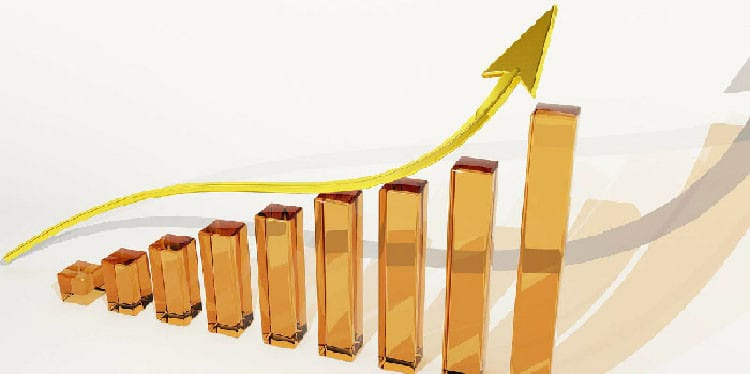Automated invoice processing software is the electronic process of extracting the invoice data that are entering a system and seamlessly inputting this data in your accounts payable or ERP systems, allowing payments to be issued within minutes or seconds.
Automated invoice processing often includes the automation of specific invoicing functions. The most automated areas in invoice automation include managing purchase orders, matching prices, transferring digital payments, and streamlining workflows. A smart invoice automation solution can effectively handle invoice management, helping organizations and enterprises cut down on their invoicing processes.
Automated Invoice Processing Software
The responsibility of invoice processing relies wholly on the accounts payable department. The traditional model is a timely process consisting of entering invoice data, creating paper invoices, matching purchase orders with goods received notes, and filing endlessly. Most consider the traditional invoicing a bloated process that creates an inefficient accounting environment. Invoices are being received via mail, fax, and email, creating a diversified receiving environment that’s not only time-consuming but highly prone to error.
This is precisely the reason why the accounts payable need automation. The accounts payable department can streamline the time-consuming invoicing system with machine learning and artificial intelligence. There’s no doubt that AI is changing sourcing and procurement.
A digital invoice is a critical element of workflow automation, which means that enterprises and organizations must consider automating different financial processes, to achieve the economies of scale associated with automation. The fact that technology is streamlining business processes means that companies can accelerate the payable process by leveraging automation.
An automated invoice moves the workflow faster compared to a manual system. Automating the accounts payable takes all the menial tasks an accounting department must accomplish. The automation surprisingly uses a computing system to simplify and complete invoicing-related tasks. Whether it’s handling purchase orders, matching prices or data entry, the smart automation solution of the invoice processing software can handle all of these.
How does Automated Invoice Processing Software Work?
The traditional process of invoice management kick-starts when the accounting department receives a supplier’s invoice.
- After it’s received, it’s matched and approved. Matching involves comparing the purchase order, the goods received notes, and the supplier’s invoice to identify any discrepancies.
- After matching, it can be approved. However, if the amount in the supplier’s invoice is a large pay-out, further approval is needed.
- After approval, the invoice is entered into a system where it’s posted for “payment”. Then the payment is issued to the supplier.
- Sometimes this manual invoicing process can take up to 10 separate steps depending on the company. This is a lot of time and strenuous amount of work, especially if the accounts department is processing multiple invoices.
Automated invoicing cuts straight to the chase:
- Immediately the supplier’s invoice is received, it’s scanned and fed into the digital accounting system.
- This form of invoice capture (also called data capture) cuts out hours of manual data entry.
- The invoice processing software then converts this data into a text-searchable document.
- The invoice data can be extracted and fed into the automated management system so it recalls which fields to capture and register into the ERP system.
- The data include the supplier’s name, purchase quantity, purchase amount, price, and so on.
- The invoices are routed to the appropriate departments for review and approval.
The invoice processing software features interoperability. Interoperability enables easy integration with mission-critical applications such as ERP, customer relationship management, and accounting software like QuickBooks and NetSuite.
Why Transition to Automated Invoice Processing
The traditional model of processing invoices is time-consuming, error-prone, and resource-intensive, particularly when you consider the hours and amounts set by organizations and enterprises.
Automated invoice processing has a multitude of benefits. Some of these advantages include an 80% reduction in a company’s procure-to-pay cycle. Automation improves invoice payment process and approval in the procurement cycle.
Additional benefits include:
- Reduces errors. With an automated procure-to-pay process, you get to enjoy fewer manual entries, thus fewer errors associated with manual entries.
- Speed. The automated invoice processing speeds up the approval processes because invoices can be routed to their respective departments for review and approval, thus reducing the processing time, especially when there are multiple invoices.
- Labour. Automated invoicing software frees up substantial amounts of time for accounting staff to focus on more mission-critical business activities.
- Duplicate invoices. The automated solution has a three-way matching feature that scans invoices and financial documents, thus reducing duplicate payments and duplicate invoices.
- Costs. Automation drastically slashes the cost of manually processing invoices such as paper costs, stamps, and ink.
- Time. Through automation, it’s possible to settle invoices in due time, thus securing early-payment discounts and avoiding late payments that may affect relationships with suppliers. It improves invoice payment process and approval in the procurement cycle.
- Efficiency. Companies with automated invoice systems enjoy efficiency because financial information is processed in real-time.
- Data. Data is the next frontier in business intelligence, and automation brings forth exciting opportunities to collect real-time actionable data that can be used to drive business insight.
- Spend visibility. Invoice processing software provides better spend visibility, allowing companies and enterprise organizations to better identify supply expenditures and monitor spend based on different suppliers.
- Security. With automation, sales records, invoicing documents, and suppliers’ information is highly secured and protected. In addition, invoicing software is protected by top-of-the-range cloud cybersecurity systems, making them inaccessible to unauthorized parties.
Invoice Processing Software – An Absolute Essential
With an automated invoicing solution, you can assign a GL code without accessing a company’s accounting platform. It’s no doubt that automated invoice processing software has emerged as a disruptive innovation. Invoice automation has produced a tremendous saving in cost and labor and restructured how the accounting department does business. More like word processing, many enterprises consider invoice processing software an absolute necessity.










